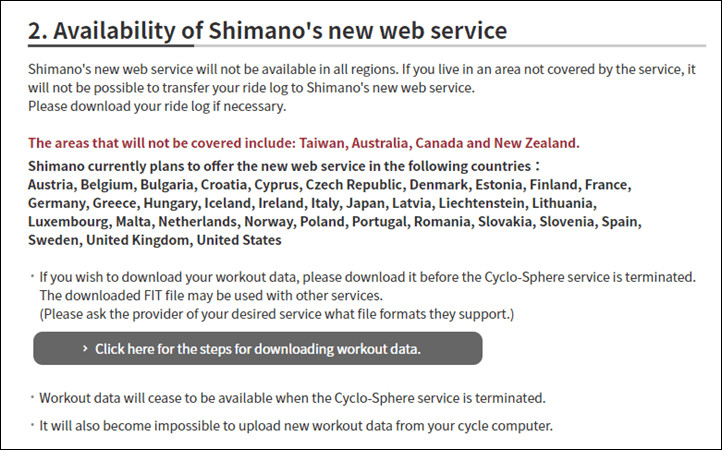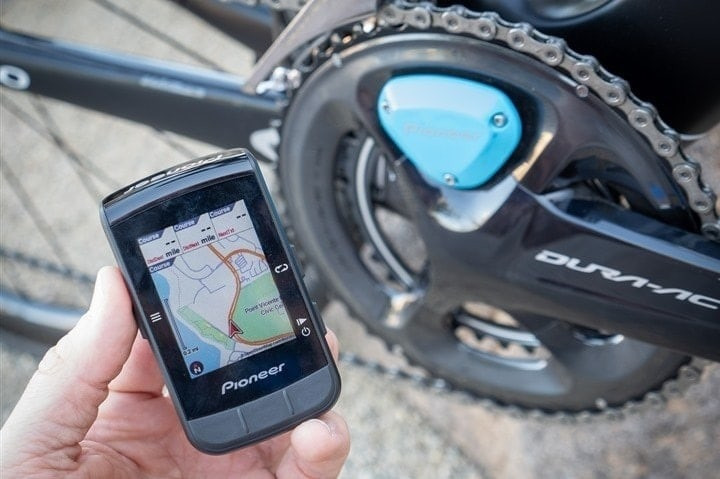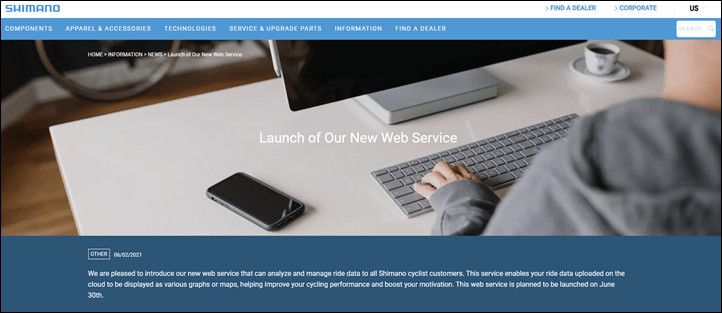When Shimano finalized the acquisition of Pioneer’s cycling division just over a year prior, skepticism was rife about the future. Fast forward to now, and Shimano has not only confirmed those doubts but exceeded the worst expectations. The handling of Pioneer Bike computers and services post-acquisition is unfolding as a spectacular failure, a situation few could have predicted in its current chaotic form. And the climax of this disruption is imminent, with significant changes scheduled by the end of the month.
Despite initial assurances from Shimano about continued sales and support for Pioneer products, industry insiders knew this was unsustainable. Shimano already had its own ecosystem, including power meters – albeit ones with known accuracy issues. Pioneer’s unique pedaling metrics, while advanced, lacked industry-wide standardization and support across major platforms. The question of integrating Pioneer’s bike computers and their associated training platform remained a significant hurdle.
At the time of the acquisition announcement, Shimano stated the Pioneer Cyclo-Sphere web platform would remain active until their own replacement was ready. However, the transition strategy has been anything but smooth. Instead of a phased approach, Shimano opted for a sudden shutdown. Pioneer bike computer users received a stark notice: the Cyclo-Sphere platform would cease operations on June 18th, rendering devices largely dysfunctional. While a new Shimano platform is promised by June 30th, Pioneer bike computers face a period of significant disruption, with functionality varying depending on device models.
For users in Canada, Australia, New Zealand, and Taiwan, the situation is even more drastic. They have been effectively told their Pioneer bike computers will become obsolete in a matter of days. From advanced cycling computers, these devices are on the verge of becoming mere paperweights in less than a month.
Let’s delve deeper into the unfolding issues and try to make sense of this problematic transition.
Decoding the Pioneer Bike Computer Communication Breakdown
Trying to understand the official communications from Shimano about this transition has been a confusing endeavor. The email and website announcements have been unclear, leading to widespread user confusion. This is particularly surprising given Shimano’s usual competence in public relations and regional communications.
In this instance, it appears Shimano’s communication strategy went awry. The message delivery feels poorly conceived, almost as if drafted hastily without proper consideration for clarity or user impact. The primary communication, a ‘Second notice’ email, was received by users, including this author, without any record of a preceding ‘First notice.’ This lack of initial communication suggests significant flaws in Shimano’s outreach plan right from the start.
The email’s tone and wording further contribute to the confusion. Phrases like “note that,” come across as oddly dismissive. The email immediately jumps into a “Transfer Schedule” without providing adequate context or acknowledging the user disruption. The crucial information about service termination and the functionality of Pioneer bike computers is buried within dense text, increasing the likelihood of misinterpretation.
The timeline presented is particularly problematic:
- June 18th, 2021: Cyclo-Sphere service termination, rendering Pioneer bike computers significantly limited.
- June 18th – 30th, 2021: A period of operational limbo for Pioneer bike computers, with limited to no functionality.
- June 30th, 2021: Launch of the new, yet unnamed, Shimano web service.
This timeline introduces a significant gap in service and device functionality. Furthermore, the email mentions “Cyclo-Sphere service terminated” but then refers to a data transfer window until September 30, 2021. This internal contradiction creates uncertainty about the actual state of the Cyclo-Sphere platform – is it completely shut down, or partially accessible for data migration?
Adding to the ambiguity, details about the new “Shimano Web Service” are scarce. Its features, compatibility, and even its name remain undisclosed. Given Shimano’s track record with software projects, skepticism about the new platform’s user-friendliness and functionality is understandable. The data transfer process itself is vaguely described, directing users to a privacy notice without clear instructions on how to actually migrate their workout data. The email mentions navigating through the Shimano Privacy notice as a step, but lacks any concrete guidance beyond that.
 image
image
Image showing a section of the Shimano email regarding data transfer, highlighting the lack of clear instructions for Pioneer bike computer users.
Pioneer Bike Computer Functionality: A Region-Based Breakdown
The email then addresses the critical issue of Pioneer bike computer functionality post-June 18th. The details are vague, stating that “details…will be provided later,” suggesting Shimano itself may not have a fully defined plan. Users are directed to a link for more information about the new Shimano web service, but concrete details remain elusive.
The implications for different Pioneer bike computer models are outlined as follows:
- SGX-CA500 users: These users are significantly impacted, losing Wi-Fi upload capabilities and reverting to USB cable data transfers.
- SGA-CA600 users: These users are promised eventual upload compatibility with the new Shimano service, but not until July, and with a period of non-functionality from June 18th to 30th.
Compounding the issue, firmware updates for Pioneer bike computers will cease after June 18th. Users are advised to perform any necessary updates immediately. Functionality like map updates will also be discontinued. This contradicts information elsewhere on Shimano’s site, which omits the map update issue, further highlighting the inconsistencies in communication.
Data download options are also problematic. While users are directed to download their workout data, the process is cumbersome, especially for long-term Pioneer users with extensive data history. The download interface is described as inefficient, and Shimano has not provided a simple “Download all” option, making bulk data retrieval a tedious task.
Screenshot of the Cyclo-Sphere data download page, illustrating the potentially cumbersome process for Pioneer bike computer users with large amounts of data.
The Enigmatic New Shimano Web Service: A Platform of Uncertainty
Links within Shimano’s communications about the “New Web Service” direct users to a page that offers minimal information. The page features a banner image of a person looking at a blank computer screen, which ironically mirrors the current state of information about the platform itself – a blank slate.
The description of the new service is limited to generic bullet points promising “easy log viewing” and information “at a glance.” No visual teasers or screenshots of the actual platform are provided, suggesting the service may be in a very early stage of readiness.
In stark contrast to the detailed pre-launch information typical of tech product releases, Shimano offers only vague assurances. The lack of concrete details raises concerns about the platform’s readiness and feature set at launch.
Further investigation reveals a critical limitation: regional availability. The new Shimano Web Service will not be available in Canada, Australia, New Zealand, or Taiwan – the very regions where Pioneer bike computer users are facing device obsolescence.
 image
image
Image highlighting the regional restrictions of the new Shimano Web Service, excluding key markets for Pioneer bike computers like Canada and Australia.
This regional exclusion means that for Pioneer bike computer users in these countries, their devices become effectively useless, unable to connect to any platform for data upload or analysis. This decision is particularly perplexing given that Australia and Canada are significant markets for Shimano.
The limited Q&A section provided by Shimano does not address this critical regional issue adequately, leaving affected users with unanswered questions and unusable devices.
The concluding section of Shimano’s email reinforces the lack of direct support, discouraging users from contacting them with inquiries.
 image
image
Screenshot of the concluding section of the Shimano email, indicating a lack of direct support for Pioneer bike computer users during the transition.
In summary, Shimano’s handling of the Pioneer bike computer transition has been marred by poor communication, contradictory information, and significant disruptions to user experience. The promised new web service offers little clarity and excludes key user regions, leaving Pioneer bike computer owners in a state of uncertainty and frustration.


 PioneerBikeComputer
PioneerBikeComputer image
image